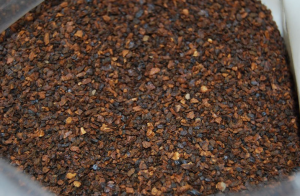CHICORY
“Friend of the liver.”

Family: Asteraceae (the Aster family)
Genus: Cichorium (Latin for “field”)
Species: intybus (tubus in Latin indicates the hollow stem)
For thousands of years, people have cultivated chicory as a medicinal herb or found it a useful weed living among them. The bruised leaves have been used as a poultice on swellings, extracts of the root have been used as a diuretic and laxative, and to treat fevers and jaundice. Second-century physician Galen called chicory a “friend of the liver,” and modern research has shown root extracts to be antibacterial, anti-inflammatory and a protectant against free radicals, all supporting liver function. Chicory also slows the pulse and lowers blood sugar. Leaf extracts have similar, although weaker, medicinal effects than the roots, and have been more used as a culinary herb historically.
Chicory was a digestive aid in classical civilizations, with the leaves finding culinary application in Greece and Rome as a food, usually in salads. The herb was listed in 802 A.D. as one of Charlemagne’s plants required to be grown at all royal estates, and remained in favor through medieval times, often grown in monasteries.

The root has a smooth, creamy feeling in the mouth that today can be found as a fat replacement in ice creams and dressings, but historically that creaminess found its use as a coffee substitute. Though it doesn’t contain caffeine, dried and roasted it tastes very much like coffee. In 1766, Frederick the Great banned the importation of coffee into Prussia, leading to the development of possibly the first coffee substitute including chicory root. The French used it throughout the Napoleonic Era as a coffee substitute alone or in a mix. Chicory was also adopted as a coffee substitute by Confederate soldiers during the American Civil War, who knew the mix as “Confederate Coffee.” It’s still found in the United States, particularly around New Orleans which had coffee supplies blockaded during the Civil War and somehow chicory stuck as a popular flavor of coffee. It was also used in England during the Second World War, where “Camp Coffee,” a coffee and chicory essence, has been on sale since 1885.

A larger cousin of the dandelion, chicory’s leaves are tastiest when young in the spring and can be used in a salad just like dandelion greens. The summer heat tends to make them taste more bitter, though still edible. By late summer the leaves might best be cooked like collards, and they can be mixed with other greens to minimize the bitter flavor. On the much younger end, a common meal in Rome, puntarelle, is made with chicory sprouts or young plants.
Science today seems to be at the beginnings of understanding the microbiome, the complex world of the human gut, which may effect our lives far more than previously thought (well, by science). Chicory is off the charts as a source of dietary fiber. Nearly 65 percent of raw chicory root, by weight, is dietary fiber, with a significant amount being the naturally soluble dietary fiber made up of inulin. Inulin is a prebiotic fiber that is also found in bananas, jicama and Jerusalem artichoke. It is a complex, plant-based carbohydrate that humans cannot specifically digest but it is an important source of fuel for gut bacteria, allowing them to create life-sustaining chemicals like short chain fatty acids that appear to play an important role in prebiotics and probiotics, which are increasingly thought to be crucial to our microbiome and thus our overall health and sense of wellness.
Links of interest:
https://www.stethnews.com/2941/this-organic-coffee-alternative-is-10x-healthier-and-more-delicious/
https://www.herbazest.com/herbs/chicory
